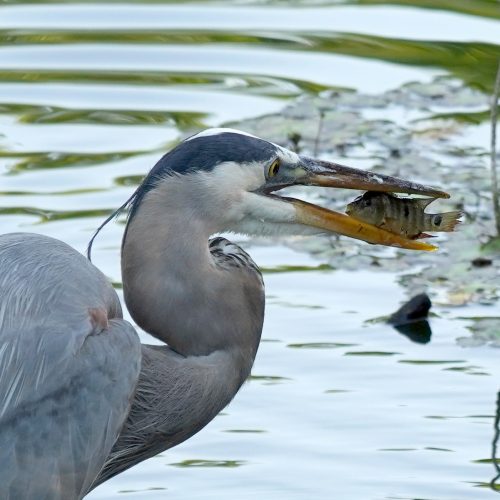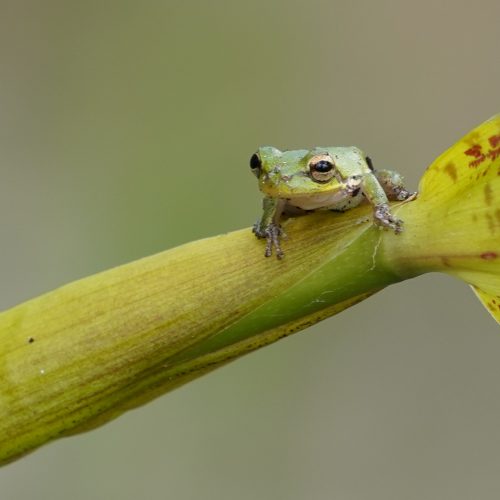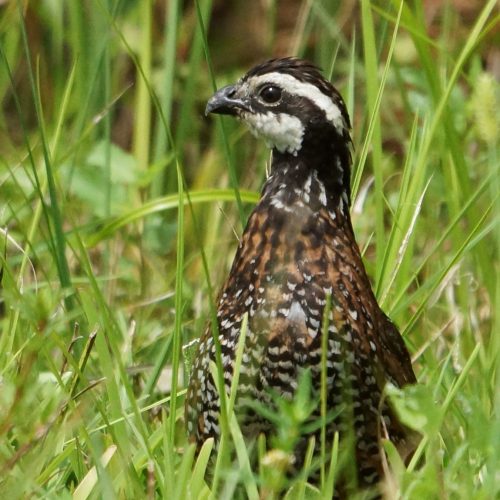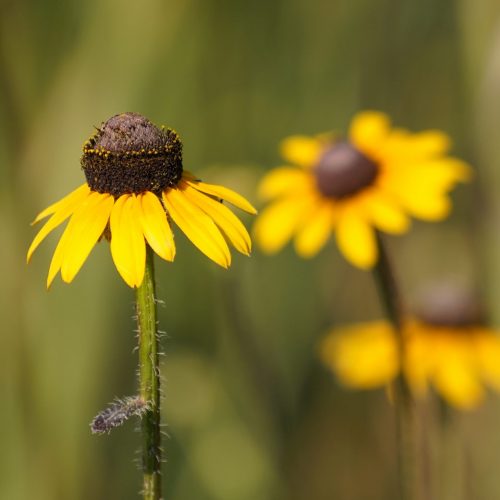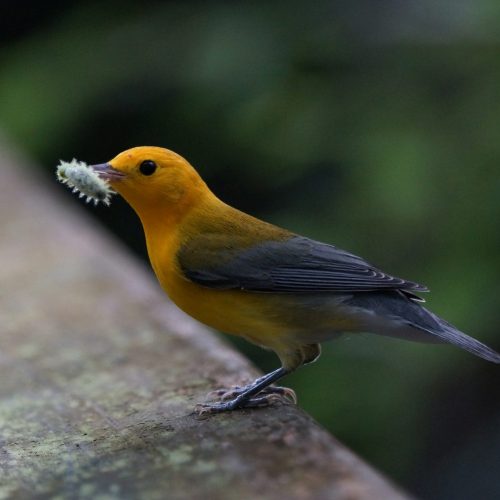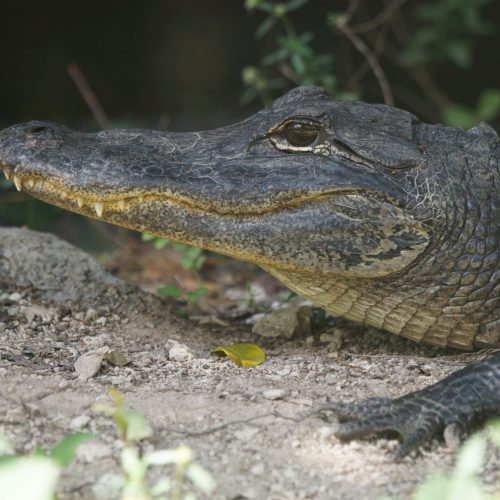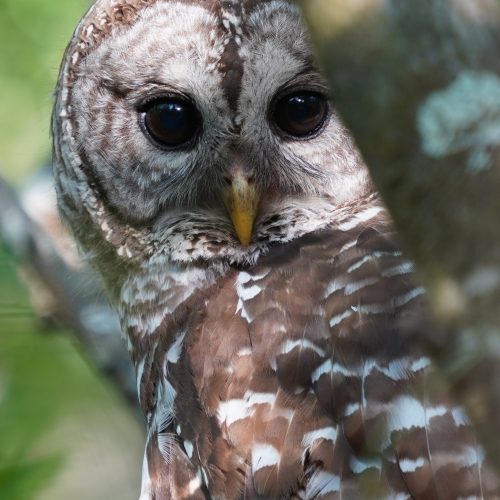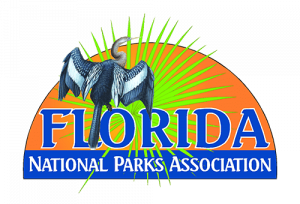Welcome
Big Cypress National preserve
The freshwater that flows from the Big Cypress Swamp, essential to the health of the neighboring Everglades, supports the rich marine estuaries along Florida's Southwest Coast. Protecting over 729,000 acres the Big Cypress National Preserve contains a mixture of tropical and temperate plant communities that are home to a diversity of wildlife, including the elusive Florida panther.
Experience Big Cypress with the Big Cypress Institute! Register for an activity today!
Explore the Preserve
Plan on spending several hours exploring scenic drives, roadside parks, viewpoints and boardwalks. Guided walks, canoe trips, and short talks are offered weekly, November through April.
Camp in Big Cypress
With eight campgrounds to choose from you can find your perfect campsite. Backcountry camping is also available.
Intl. Dark Sky Park
Away from the urban development of the east and west coasts, Big Cypress National Preserve has one of the last protected night skies where visitors can enjoy a night-sky strewn with thousands of stars.
Discover Wildlife
Discover the rich culture and the stories of the western everglades and explore the mosaic of plants and animals that thrive in the diverse environment of Big Cypress National Preserve.
Plan Your Visit to Big Cypress National Preserve
Seasonal sheet flows of water from northeast to southwest across the Big Cypress Swamp carve narrow, linear valleys just inches deep into the limestone. Cypress trees grow tall in the slightly deeper water of these eroded strands. In some areas the water has eroded deep circular depressions in the limestone substrate, creating suitable soil depths for tall cypress. The shallower soil along the edge, or higher sides, of these depressions results in smaller trees. As a result, dome-shaped humps dot the horizon — cypress domes. Between the strands, clay-like marl soils form prairies lush with grasses and wildflowers. These strands, domes, and prairies, together with pinelands, hardwood islands or “hammocks,” and a fringe of mangrove forest, produce the rich diversity of habitats within Big Cypress National Preserve.
Water is the key here. The Preserve receives nearly 55 inches of rainfall each year, flooding the cypress strands and prairies with a shallow sheet of life-giving water. Plants and animals in Big Cypress and the Everglades depend on this water for survival. It flows through the Preserve into the 10,000 Islands area along the Gulf of Mexico, delivering valuable nutrients to estuarine species like snook, shark and crab.
The Preserve provides refuge for species threatened by development of this popular state. Endangered species such as Florida panthers, wood storks and red-cockaded woodpeckers can be found in the Preserve. Rare orchids, ferns and bromeliads (air plants) are found in more inaccessible areas. Humans, too, find refuge here. Clear, bright skies unlit by city lights invite stargazing. Hiking, canoeing and camping opportunities abound. With care, future generations will find refuge and a new vocabulary in Big Cypress National Preserve.
- Access
- Accessibility
- Passes & Fees
- Permits & Reservations
- Places to Go
- Pets
- Safety
- Visitor Centers
- Weather
- Book Online Now
Big Cypress National Preserve is open 24 hours a day year round. Visitors can enter or exit at any time. To stay overnight, visitors must be in a designated campground site or the backcountry with a valid permit.
From time to time, the superintendent implements area closures to protect resources, or to ensure visitor safety. When necessary, park rangers will issue citations to persons violating the terms of a shutdown.
From West Coast Of Florida, North Naples, Fort Myers, Tampa
Take I-75 (Alligator Alley) South to Exit 80, SR-29.
Head south on SR-29 (towards Everglades City) 17 miles to where it intersects with US-41 (Tamiami Trail).
Turn Left onto US-41 southbound and proceed approximately two miles.
Big Cypress Swamp Welcome center will be on your right, on the south side of US-41.
From East Naples, South Naples, Marco Island, Everglades City
These visitors will find it fastest to find US-41 southbound and proceed directly along it, as if they were heading for Miami.
Keep an eye out for the intersection of US-41 / SR-29 (traffic light) –you will only go approximately two miles further beyond that intersection.
Big Cypress Swamp Welcome center will be on your right, on the south side of US-41.
Oasis Visitor Center is another 20 miles down the road, on the opposite side.
From The East Coast Of Florida,Fort Lauderdale & Northward
Take I-75 North out of Fort Lauderdale and drive across to Exit 80 (SR-29 / Everglades City)
Head south on SR-29 (towards Everglades City) 17 miles to where it intersects with US-41.
Turn Left onto US-41 / Tamiami Trail southbound and proceed approximately two miles.
Big Cypress Swamp Welcome center will be on your right, on the south side of US-41.
Oasis Visitor Center is another 20 miles down the road, on the opposite side.
From Southwest Florida, Miami, Homestead, Florida Keys
These visitors will find it fastest to find US-41 / Tamiami Trail northbound (called SW 8th Street in Miami itself) and proceed northbound (technically, you are travelling west) all the way out.
From the Keys or Homestead, we recommend taking 997 Krome Avenue North to reach US-41.
Once you leave the edge of Miami (at the intersection of US-41 / 997) you will drive about 40 miles.
Oasis Visitor Center is located on the right, on the northside of US-41.
Big Cypress Swamp Welcome Center is another 20 miles down the road on the opposite side.
Visitors with mobility impairments can access the visitor centers, restrooms throughout the preserve, campgrounds, and boardwalks.
For visitors with hearing impairments, a variety of publications may be obtained at both visitor centers. Wayside exhibits with illustrations and text on natural and cultural features are situated throughout the Preserve and in the visitor centers.
Entrance Fees
There is no entrance fee to access the national preserve. Fees are collected within the national preserve for some facilities and the processing of off-road vehicle permits.
Camping Fees
For information on the various campgrounds, amenities, fees and reservations go to www.recreation.gov.
Off-road Vehicle Permits
An annual off-road vehicle permit, displayed on the inspected vehicle, is required for off-road vehicle operation on the preserve trails. The fee is $100 annually per vehicle permitted.
Backcountry Permits
Backcountry permits are required for anyone traveling off from the main designated roads into the preserve. You can obtain permits at trailheads. If you have questions about backcountry permits, call 239-695-1205.
Filming & Photography Permits
Filming/Photography Permits are issued for photography, filming, and associated sound recording to ensure the protection of resources, to prevent significant disruption of regular visitor uses, or when they involve props, models, professional crews, and casts or set dressings. Permits are required for access to areas normally closed to the visiting public.
Landowner Related Permits
Access permits, burn permits and other permits required by landowners within the preserve can be obtained by calling 239 695 1117.
Off-road Vehicle Permits
Permits are required for off-road vehicle operation within the Preserve. If you have further questions about the off-road vehicle permitting process you may call 239 695 1205.
Research Permits
For those wanting to conduct special research within the Preserve, a permit is required. For details on research permits call 239 695 1105.
Special Use Permits
Permits may be issued for requests for special uses within the Preserve. These uses include, but are not limited to such things as film permits, request for events or special access requests. For information on Special Use Permits you may call 239 695 1117.
Rager-Led Activity Reservations
Some Ranger-led activities require advance reservations to participate in the activities. Reservations are accepted up to 14 days prior to the date of the activity.
Education programs, special request programs or off-site programs can be made by contacting the Education and Outreach Coordinator at 239-695-1164. Requests are limited by staff availability.
Entering the backcountry requires that you fill out a backcountry permit. Be aware that there are several private properties in this area —respect private property and do not trespass. Travel to the north into the Big Cypress Seminole Reservation, or to the south into the Miccosukee Reservation— by foot, bicycle, vehicle or watercraft – is by tribal permit only.
Wildlife fencing is installed along I-75 to minimize the threat of wildlife, including the endangered Florida panther, from getting on to the busy roadway. If the automatic fence at the entrance of the parking area is not operational contact – 800-788-0511.
I-75 Mile Marker 51
The site is accessible to westbound travelers on I-75. Those traveling east may make a u-turn at Exit 49 (Snake Road) to gain access to the facility. Upon leaving the facility and continuing west travelers may make a u-turn at Mile Marker 63 to travel east.
The facility provides parking and access into the Northeast Addition Lands of the Preserve. Visitors may choose to park and hike directly into the backcountry from the parking facility. You may also drive along the levee road — on those portions open to street-legal vehicles — and park along the road to hike into the backcountry or fish in the L-28i canal.
If parking on the Levee Road park in a manner that does not block other traffic. The speed limit is 25 mph, no trailers are allowed along the levee road except by special permit.
At this time hunting and recreational off-road vehicle use are not allowed in this portion of the Preserve.
There are no marked hiking trails into the area. Travel requires individuals be familiar with orienteering by map and compass or by the use of a GPS – be prepared.
You can fish in the L-28i canal or launch a vessel from the boat ramp. Fishing requires appropriate state licenses. Be sure to familiarize yourself with state regulations related to fishing and boating activities.
Dispersed camping is allowed and biking is allowed along the levee road.
I-75 Mile Marker 63
On Friday morning, August 22, 2014, the Florida Department of Transportation (FDOT) opened the Mile Marker 63 rest area, along Alligator Alley. Crews completed the $8.8 million project on schedule.
Work began in spring 2013 to replace the former rest area with a larger restroom facility, an upgrade of the wastewater and water treatment plant, improvements to two recreational access areas adjacent to the Big Cypress National Preserve nature trails, and construction of a new public safety center. The design/build project increases the number of restroom facilities from 30 to 44 including the addition of four family restrooms. Each recreational area will accommodate up to 15 vehicles and 25 trucks or trailers. Improvements also include various site improvements such as lighting, landscaping, and resurfacing.
The new public safety center will accommodate four to six Collier County EMS personnel and will assist in reducing response times to incidents along Alligator Alley. With FDOT’s funding in place for Collier County’s operation of the public safety center, county staff has begun preparations to occupy the new facility. It is expected to be operational in late 2014. The facility provides parking and access into the Northeast Addition Lands of the Preserve. Visitors may park and hike directly into the backcountry from the parking facility.
At this time hunting and recreational off-road vehicle use are not allowed in this portion of the Preserve.
The Florida National Scenic Trail, along with a few associated trails, may be accessed from this area. Visitors may also hike off trail, but this requires individuals be familiar with orienteering by map and compass or by the use of a GPS – be prepared.
Dispersed camping is allowed.
I-75 Mile Marker 70 Westbound
There are no restrooms or potable water available. This facility is accessible from I-75 westbound only. This facility has a walk-through gate in the wildlife fence* that allows access into the Bear Island Unit of the Preserve.
Hiking, walk-in hunting, fishing and camping in designated areas (Bear Island, Pink Jeep, and Gator Head Campgrounds) is allowed from this site.
There are no marked hiking trails originating from this site. Travel requires individuals be familiar with orienteering by map and compass, or by the use of a GPS unit, be prepared.
Upon leaving the facility, continuing to the west, a u-turn can be made at Mile Marker 80 to return eastbound.
I-75 Mile Marker 70 Eastbound
There are no restrooms or potable water available. This facility is accessible from I-75 eastbound.
This facility has a walk-through gate in the wildlife fence* that allow access into the Turner River Unit of the Preserve.
Upon walking into the area you will be on designated off-road vehicle trail TRU-2 (Cypress Lane). You can follow the trail to a network of other designated trails that allow for off-road vehicle use (must use other access points), hiking and biking.
Hiking, biking, walk-in hunting, fishing and dispersed camping is allowed from this site. Biking is allowed only on designated off-road vehicle trails, and not all designated
trails will be suitable for biking. You may hike on designated trails or choose to orienteer with map and compass or GPS cross-country; be prepared.
Upon leaving the facility, continuing east, a u-turn can be made at Mile Marker 63 to return westbound.
HP Williams Roadside Park
This small roadside rest area is named for Homer P. Williams, an engineer, who worked for Barron Collier during the construction of Tamiami Trail in the 1920s.
Designated in 1965, by the Florida Legislature, this park is believed to be the first of its kind in the state of Florida.
There is a short boardwalk overlooking a canal where a variety of wildlife, including alligators, turtles, and a variety of birds are often seen. Picnic tables, and a vault toilet are available. Park rangers provide informative talks of various subjects here during the winter months.
Kirby Storter Roadside Park
Approximately halfway through your drive across Big Cypress along Highway 41 is Kirby Storter Roadside Park. Named after one of the area’s pioneering families, Kirby Storter worked for several years as a carpenter and electrician for Barron Collier, and later oversaw construction of South Florida roads (including Tamiami Trail) for the Florida Roads Department.
The Florida Legislature designated this park in Kirby Storter’s honor in 1971, just six years after his retirement. The popular Kirby Storter Boardwalk is also located here. This one-mile, round-trip stroll offers an excellent opportunity to explore a mature cypress strand without getting your feet wet. The boardwalk ends at an overlook, where you will often find a variety of wildlife enjoying the oasis.
Loop Road Scenic Drive
One of the two popular scenic drives within Big Cypress National Preserve, it is a 27-mile drive that travels through dwarf cypress forest, pine forests and deep strands. Drive this scenic road, and explore some of the more remote areas of the Preserve. Loop Road, otherwise known as County Road 94, was created out of a dispute over the official route of the Tamiami Trail. The road is gravel for most of the route. We recommend asking a ranger about the current road conditions before travel. Loop Road is 24 miles long and is south of the current path of Tamiami Trail. It spans three counties: Collier to the west, Monroe in the center, and Miami Dade to the east. Visitors will pass through mostly cypress swamp, which are flooded forests in the summer wet season (May through October), but mostly dry in the winter, except for the areas of lowest elevation – the cypress strands.
Turner River, Wagonwheel, Birdon Roads Loop Scenic Drive
A 17-mile drive that takes you by open prairies and popular wading bird feeding areas. While visiting the national preserve, take the time to leave the beaten trail of US-41 (Tamiami Trail) and take a more leisurely journey along one of these scenic drives.
Shining waters, flurries of wings, and sunning alligators are all things you may experience along the Turner River Road in Big Cypress National Preserve. The 1950s brought the addition of this road to the Big Cypress Swamp. Building in South Florida presents a challenge for you must rise above the water by borrowing land. This creates a system of canals that mirrors the road ways. During the wet season, May to October, water is plentiful throughout the Preserve, and wildlife dispersed. The remainder of the year when water may be scarce canals provide habitat for a myriad of wildlife. As you travel, this guide will introduce you to some of the residents you may meet along the road.
Activities with pets are limited at Big Cypress. Pets are not allowed on any hiking trails. Pets may accompany visitors in the campgrounds, picnic areas and at pull outs along the paved scenic drives. Pets may be walked on roads or in parking lots, but must be leashed at all times when outside a vehicle. Pets may not be left unattended.
Car temperatures rise quickly in the sun, even on cool days. Your pet can easily die of heat exhaustion. If you are leaving a pet in a car, crack the windows as much as possible and leave water to drink. We recommend you not leave pets in the car at all when temperatures are above 68 degrees, even with the windows cracked.
Big Cypress National Preserve is a prime example of natural Florida unfamiliar to most visitors, filled with natural wonders that are also potential hazards at times. There is no guarantee of your safety, yet it need not be dangerous. Whether exploring the backcountry, canoeing in Turner River, observing wildlife, or simply driving on Tamiami Trail, let safety be your constant companion. Regulations are strictly enforced to protect you and the preserve’s wonders. Spend a moment reviewing these common safety concerns, so that you will have an enjoyable visit.
Travel Notification and Emergency Contacts
Before entering the backcountry, you need to fill out a backcountry permit. The forms and instructions are located at each trailhead kiosk. Please make sure to sign and date the form. Keep the top copy with you and place the carbon copies in the drop box. It is always a good idea to file an itinerary with family and friends. Let them know where you are planning on traveling and when you will return. It is also a good idea to carry a Personal Locator Beacon, if possible. These can be activated in the event of an emergency.
In case of an emergency, call Preserve Dispatch at 1-844-NPS-0911 (1-844-677-0911).
Drinking Water
When going into the backcountry, bring enough water to sustain you. Bring up to one gallon, per person, each day. To protect yourself from disease, treat water from any natural source before drinking.
The most reliable way to disinfect water is to boil it for three minutes. Otherwise, use a filter rated to remove bacteria and protozoa (1 micron or smaller filter). After filtering, treat the water with two drops of chlorine bleach per quart (liter) of water for 30 minutes in order to kill viruses (which are not removed by filters).
To prevent the spread of Giardia and other water-borne disease organisms, use restroom facilities where available, and wash or sanitize your hands often.
Driving
Most visitor injuries and accidental deaths in Big Cypress result from car accidents. While driving is a great way to see the preserve, it can also be dangerous, particularly if you are tired, or are going too fast. Follow posted speed limits, and with the assistance from the RADS system watch for wildlife that may be crossing the road, especially at night.
Remember, you share the road with bicyclists and pedestrians. Florida state law requires a 3-foot buffer between vehicles and bicycles.
Fire
Fire danger is always an important safety consideration in Big Cypress. Wood or ground fires are sometimes prohibited in the preserve and you must exercise caution in the use of gas stoves, charcoal grills, and cigarettes. Big Cypress occasionally experiences drought conditions and some restrictions may apply to the use of these heat sources. Check with a park ranger for the latest information about fire safety in the national preserve.
Big Cypress truly is wild country. In fact, many people visit Big Cypress precisely because it is remote and rugged. But remember, as you enjoy the splendor of this great wilderness area, to make safety a priority. By giving forethought to your actions you can have a safe, exciting, and rewarding vacation in Big Cypress National Preserve.
Florida Panthers
Big Cypress is panther country. While panther attacks are rare, they do occur. Should you encounter an aggressive panther, hold your ground, wave your arms, throw stones, and shout. Never run. Keep groups together and consider hiking elsewhere with young children if you come across a special panther warning sign posted at a trailhead. It is strongly advised to not hike alone.
Hiking
Exploring this swampy and wild country on foot requires both mental and physical preparation. Trails vary from well maintained to primitive and barely visible. Plan hikes within your ability. Take along a map and compass and know how to use them. Be aware of weather and avoid hiking during inclement weather. If you get caught by a storm, stay low and avoid clearings. Carry a flashlight and a first aid kit.
Let someone know where you’re going and when you expect to return. Provide them with the National Park Service Dispatch emergency number. If you do not return within your anticipated return time, and they are unable to make contact with you they should contact Dispatch and provide your itinerary information.
If you get hurt or lost, stay in one place to conserve water and energy. Signal for help; three blasts on a whistle is a well-recognized distress call. In remote areas, a large “X” marked on the ground by any means visible from the air will signify that help is needed. Carry a signal mirror. Remember to obtain a free backcountry use permit before heading out overnight. Hunting is allowed within the Preserve from September through December and in March. Hikers should wear a lightweight, blaze orange vest during hunting seasons.
Lightning
South Florida receives more lightning strikes than anywhere else in the United States and there are more casualties from lightning strikes than all other natural hazards combined. Thunderstorms are common in the summer months, appearing almost every afternoon like clockwork. In the winter months, storms and lightning are less frequent, but may be as severe. If a storm builds, stay as close to the ground as possible and stay away from tall trees or isolated tall objects. A ditch or shrubby area is the safest place to be.
Keep Wildlife Wild
Keep in mind that Big Cypress is home to a variety of creatures, including large species such as panthers, alligators, and black bears. It is essential that we act respectfully and never approach or feed the wildlife. Although they sometimes appear tame, all of the animals in the national preserve are wild and could pose a threat to your health and safety if you attempt to approach or feed them. Most wildlife will move off the trail when it hears you coming, but if you meet an alligator on the path, give it a wide berth and do not attempt to move it yourself. To prevent these creatures from becoming habituated to people, store all food, coolers, cooking utensils, and toiletries in a hard-sided vehicle, preferably in the trunk of your car. Dispose of garbage properly. Remember to report sightings of bears and panthers to a park ranger.
Heat
Tropical heat can kill you. The average high temperature in Florida during the summer months is around 95 degrees. Factoring in humidity, the heat index often soars to over 100 degrees. It is very easy to get overheated, or dehydrated while participating in outdoor activities. Carry plenty of water (at least one gallon per person, per day) and wear a hat, long pants, long-sleeved shirt, and sunscreen when hiking. Plan ahead and bring water with you, or stock up at the Oasis Visitor Center or Big Cypress Welcome Center. Though it is not recommended, if you do collect water in the backcountry, be sure to treat it properly to destroy any microscopic organisms. Use caution when hiking during midday in summer; travel as wild animals do, in the early morning or late evening hours rather than during the high heat of the midday. If you can’t quench your thirst or become lightheaded and nauseated, you may be suffering from heat exhaustion. Find a shaded location and rest, drinking water slowly before the more severe heat stroke can set in.
Navigation
Finding your way in the backcountry can be difficult, even for experienced outdoor enthusiasts. Familiarize yourself with trails before traveling into the Preserve. A GPS unit and coordinates can save a life, keep the tracking system on at all times if possible. Carry a compass and map, and know how to navigate using these tools.
Poisonous Plants
Several poisonous plants can be found throughout the national preserve and it is important to be familiar with them. Poison ivy is very common, usually found as a creeping vine. Keep the phrase “leaves of three, let it be” in mind when moving through dense vegetation. Poisonwood is also found in the southern portion of the preserve, identified by its shiny, leathery green leaves. Both species can cause red, itchy rashes. Some people may also have a similar reaction to Brazilian pepper, an exotic shrub found commonly throughout Big Cypress. Check with your local pharmacy for products that can be applied before and after contact with either species. Keep these safety tips in mind as you enjoy your experience in Big Cypress National Preserve. Please travel safely in the backcountry.
Proper Attire & Equipment
Long sleeves and long pants can help protect you from branches, sawgrass, or other obstacles that may pierce your skin. Closed toed shoes are necessary to protect toes and ankles from roots, caprock or other obstacles along trails. A wide brimmed hat will also help protect against sunburn. Remember that the South Florida sun is intense and sunscreen should be applied frequently. Other important things to carry include a first aid kit, flashlight, whistle, extra food and water, bug spray, warm clothing and matches or a fire starter. Also, check the backcountry kiosk for hunting season dates before entering the trail and remember to wear at least 500 square inches of fluorescent orange as a safety precaution.
Venomous Animals
Venomous snakes, scorpions and spiders are active year round. Inspect your shoes and sleeping bags or bedding before use and always carry a flashlight at night. While snake bites are rare, they usually occur below the knee or elbow. None are aggressive, but can strike if provoked. Pay attention to where you walk and place your hands. Consider wearing high boots or protective leggings while hiking. Stay a safe distance from any wildlife. If you are bitten by a snake, it is crucial to exit the backcountry and go to the nearest emergency room.
Waste
Keep YOUR national preserve clean! Pack it in; pack it out.
While hiking or camping in the backcountry, where facilities are not available pack out all trash and food scraps. Deposit solid human waste in a hole at least 6-8 inches deep and 200 feet from water, camp, and trails. An even better option is to take it with you. By doing so, you help prevent others from coming into contact with waste, which is hazardous to health, not to mention unsightly.
Big Cypress has two visitor contact stations that provide visitor information and orientation, issuing permits, sales items and other services. Both of these facilities are open year-round, except December 25. Both facilities are midway between Miami and Naples along the Tamiami Trail.
The Big Cypress Swamp Welcome Center and the Oasis Visitor Center are open seven days per week from 9:00 am to 4:30 pm. The Preserve Headquarters Office, located in Ochopee, is open Monday through Friday from 8:00 am to 4:30 pm. The office is closed on all federal holidays.
The Off-road Vehicle Permit Office located at Oasis Visitor Center is open Friday, Saturday and Sunday from 9:00 am until 12:00 pm for walk-in first-come, first-served assistance and from 12:30 pm until 4:00 pm for appointments only. The office is open on Monday for appointments only. The office is closed on December 25th.
Big Cypress Swamp Welcome Center
Phone: 239 695 4758
Address: 33000 Tamiami Trail East, Ochopee, Florida 34141
Opening hours: Open daily, 9:00-4:30 pm. The welcome center is closed December 25
Available Facilities: Florida National Parks Association bookstore and shop. Public restrooms. National Park Service staff are available to assist visitors with information about available activities.
Dedicated in 2010, the Big Cypress Swamp Welcome Center is an interagency center for all public lands within the Big Cypress Swamp. The center is approximately five miles east of State Road 29 on the Tamiami Trail. The facility was designed with energy conservation in mind, making maximum use of renewable resources. The welcome center offers indoor and outdoor exhibits related to the natural and cultural history of the Big Cypress Swamp, educational materials and an introductory film to the swamp, its resources, and recreational opportunities.
Oasis Visitor Center
Phone: 239 695 1201
Address: 52105 Tamiami Trail East, Ochopee, Florida 34141
Opening hours: Open daily, 9:00-4:30 pm. The visitor center is closed December 25.
Available Facilities: Florida National Parks Association store and shop. Public restrooms. National Park Service staff are available to assist visitors with information about available activities.
Built in the 1960s, this building was once a private airport with a hanger and restaurant. It was rather eye-catching from the road due to the passenger plane mounted to its roof as decoration. It was eventually purchased by the National Park Service in the 1980s, to be used as a visitor center. Today, the building serves as the Oasis Visitor Center. Inside, there are exhibits related to the natural and cultural history of the preserve, educational materials, sales items, and an introductory film. National Park Service staff are available to assist visitors with information about available activities.
Headquarters Building
Phone: 239 695 2000
Address: 33100 Tamiami Trail East
Ochopee, Florida 34141
Opening hours: Open from 9:00-4:30 pm, Monday through Friday.
Headquarters is located near Naples and Everglades City, along U.S. 41, five miles east of the State Road 29 intersection.
Big Cypress has a tropical savanna climate with some of the hottest days in Florida. January has an average high of 78.4 and August has an average high of 94.0, while Miami averages 76.1 and 90.7, respectively. However, nights cool down into the 50s in winter. Means range from 66.5 in January to 84.7 in August. Highs exceed 90 on 159 days per year, while they fall below 70 on just 10. Hardiness zone is 10A, with an average annual minimum of 34. The lowest recorded maximum was 48 in 2010, while the highest minimum on record was 89 in 2005. Big Cypress National Preserve experiences two predominant seasons- wet and dry.
Rainy Season – May through October
Seasonal rains bring higher water levels to Big Cypress, causing wildlife such as alligators and wading birds to disperse and to be seen less frequently. Mosquito levels may become high, and exploring trails in some areas of the preserve can become intolerable. While visiting during this season you may find daily afternoon thunderstorms, high humidity, temperatures in the mid to high 80s and a multitude of mosquitoes. During this time of year, you will also find an array of flowering plants in bloom, views of towering storm clouds and opportunities to experience the preserve with fewer visitors.
Remember, during the rainy season mosquitoes may be unbearable in some areas.
Dry Season – November through April
While some birds are drawn to the preserve year round, the abundance of migrating and wintering birds makes the area a birder’s paradise during the dry season. Falling water levels within the Big Cypress result in abundant wildlife concentrated in ponds and canals, providing excellent viewing opportunities.
The dry season is the busy season in south Florida’s national parks. Most visitors to Big Cypress come between December and March. During months of higher visitation campgrounds may be busy. Larger crowds, fewer mosquitoes, greater wildlife viewing opportunities and more enjoyable hiking, camping and canoeing adventures characterize this time of year.
Finally, the Preserve offers a greater variety and number of ranger-led activities that provide an in-depth look into the extraordinary natural and cultural resources protected in the area.
Taking seasonal changes into consideration and planning ahead are the best ways to take advantage of recreational opportunities. Choosing what time of year to visit, based on your interests, can be the key to an enjoyable trip.
A hat, comfortable clothing and sturdy walking shoes or boots are necessary for anyone planning to hike. Hikers must always carry plenty of water. One gallon per person per day is recommended.
Contact the Preserve at 239-695-4758, or 239-695-1201 for information on current weather conditions.
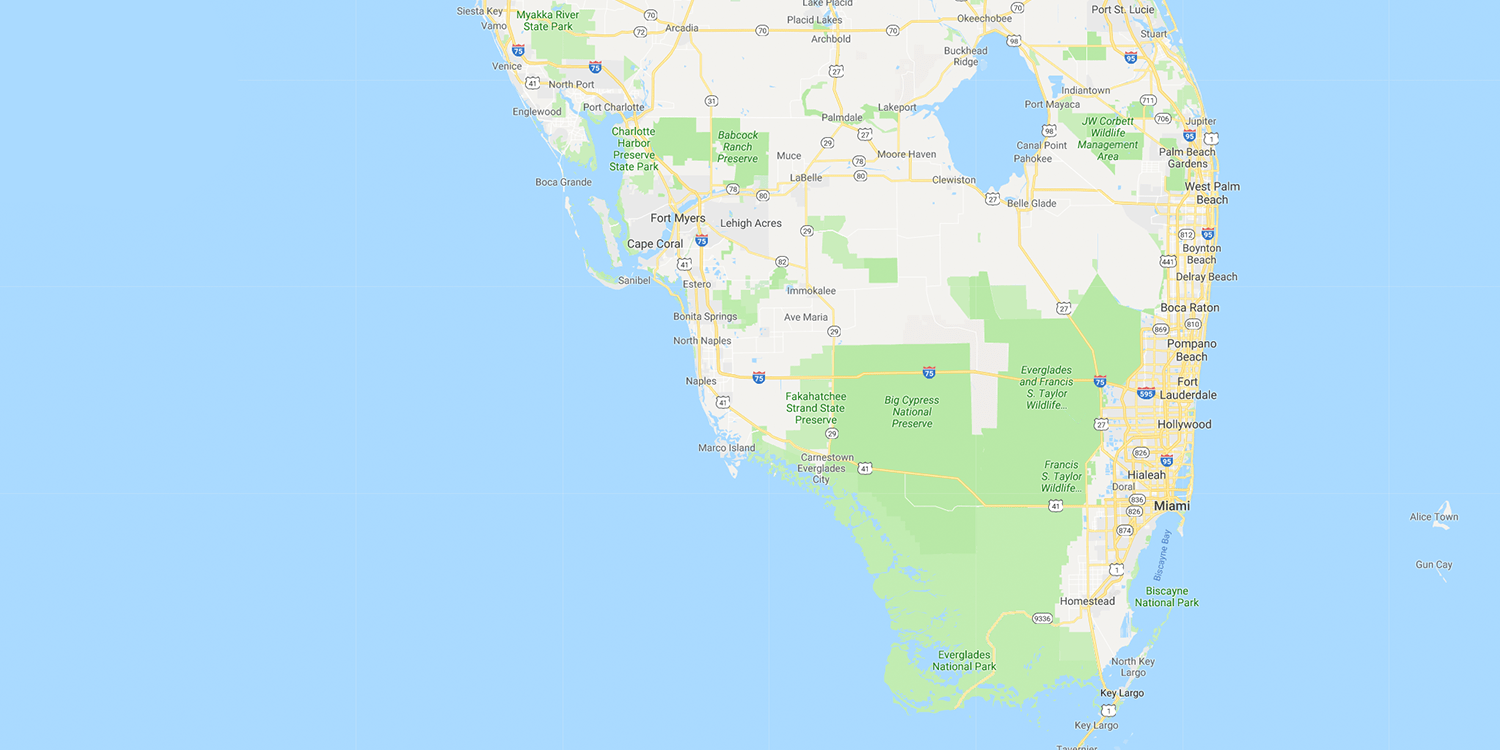
Support the Big Cypress National Preserve
Make a donation, contribute with purchases, or offer your time and experience.
Get Involved